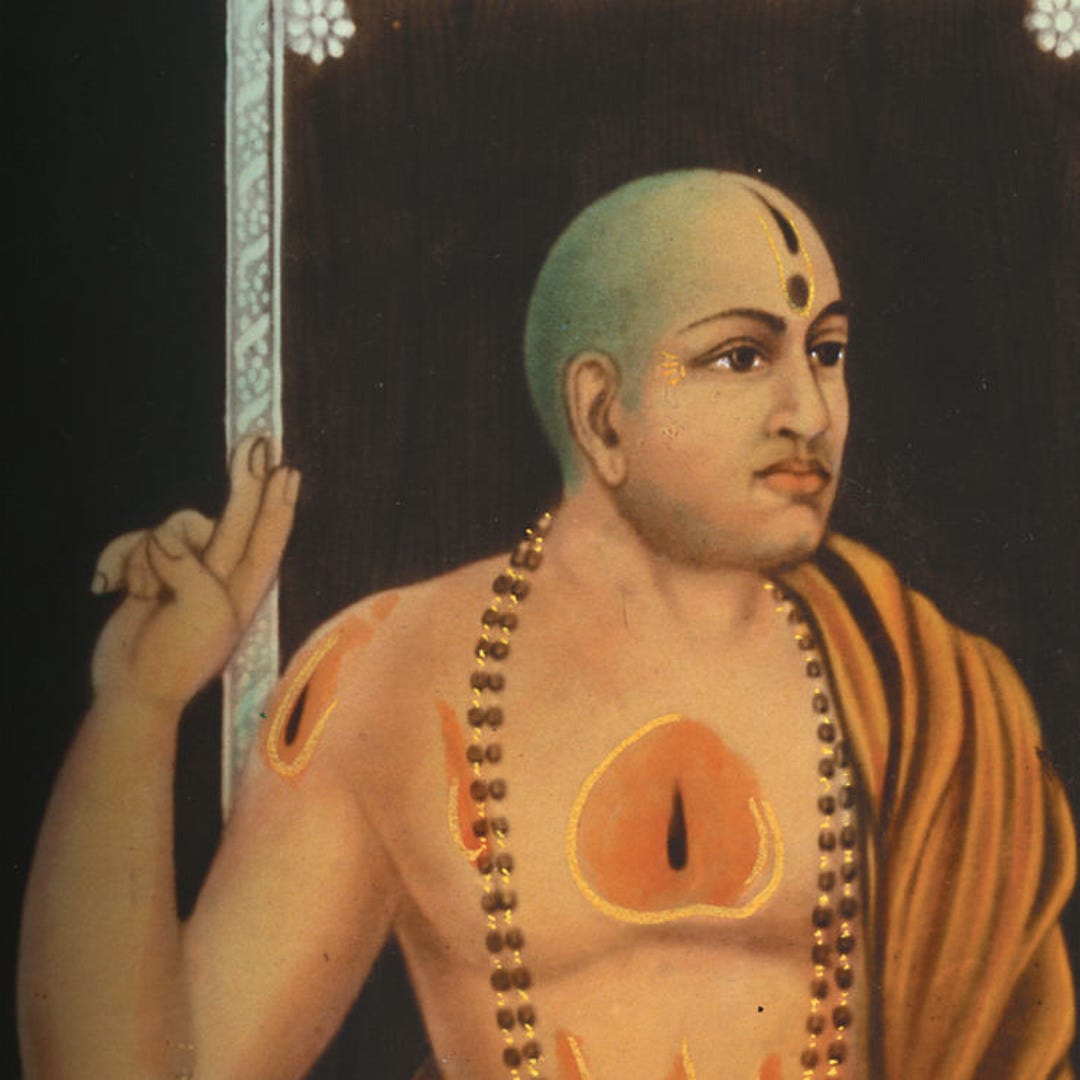The four states of consciousness: Refuting false theories
Ultimately, the Lord can't be understood through the perception of the mind or the deliberation of the intelligence. He can be understood only through perfect knowledge received through the paramparā.
« The Muṇḍaka Upaniṣad: An in-depth study
Refuting false theories
Ultimately, the Lord can't be understood through the perception of the material mind or the deliberation of the material intelligence. He can be understood only through perfect knowledge received through the paramparā system by a worthy student. Different types of philosophers create various theories using their limited power of speculation. Some think that the Lord transforms himself into the material creation, others think that all forms and activities are the fruit of illusion, and the spiritual reality is devoid of form, others believe that material nature creates independently from the Lord, but all these different theories are incorrect.
Lord is all-powerful and from His mere desire, the entire material creation manifests through the interaction of His different energies. Everything happens in such a way that the Lord never comes in contact with Maya, and nor the Lord nor His energies are transformed in the process.
Kārikā 1.13:
vibhūtim prasam tvanaye manyante sṛṣṭi-cintakāḥ
svapna-māyā-rūpam iti sṛṣṭim anyair vikalpitām
Some thinkers speculate that the Lord transforms himself into material objects, producing the material creation. Others think that the material creation is just like a dream, an illusion without any substance.
Commentary: Even amongst the philosophers who accept the Vedas, there are divergences regarding the nature of the Lord and this material world. Māyāvādis believe that the material world is unreal, that it exists only under the illusion of Maya. Once the illusion is removed, they say, one understands that there is no material world, just like one may see a rope on the road and, under illusion, take it as a snake. The question of where this illusion or Maya comes from is considered unanswerable, and Brahman is considered to be indescribable in words since any description would be covered by the illusion of Maya. Their theory is called vivarta-vada.
Others, like the followers of Bhāskara, believe that Viṣnu transforms himself into the material objects that compose the material creation. Their philosophy is that Viṣnu transforms himself into the material cosmos, without, however, ceasing to exist. Just as the Māyāvāda theory, this view is incorrect. The scriptures make clear that the Lord is eternal and undergoes no transformation.
The philosophy of Bhāskara is called pariṇāma-vāda, but it is different from the pariṇāma-vāda proposed by Vaishnava ācāryas. The Vaishnava understanding is that the Lord produces the material world out of His energies, but that neither the Lord nor his energies undergo transformation. The Lord and His different energies remain thus the same, and the repeated creation and destruction of the material cosmos happen due to a process of permutation of the external potency. Just like Lego blocks can be combined into toys and the toys can be later disassembled back into the original blocks, the material energy organizes itself into the material creation when touched by the time-energy of the Lord, and is returned to its original state at the time of annihilation. The Vaishnava conclusion thus rejects both the idea that the material creation is false and that it is a transformation of Viṣnu. Rather, it is a permutation of His energy.
Kārikā 1.14:
icchāmātram prabhoḥ sṛṣṭir iti sṛṣṭau viniścayaḥ
The Lord creates the material world by His mere will. That's the firm conclusion of the true sages.
Commentary: If the material creation is not false and is also not a transformation of the Lord, how does it appear? The answer is simple: The Lord is all-powerful and from His mere desire, the entire material creation manifests. Lord Mahā-Viṣnu looks in the direction of pradhāna, his external potency, impregnating it with kāla, the time energy, and the jīvas who desire to participate in the material creation. Due to the combination of kāla and pradhāna, the whole manifestation takes place through the permutation of energy. All of this happens due to the interaction of the different potencies of the Lord, without His direct participation, and the potencies themselves are not transformed in the process. This makes it possible for the cycles of material creation and destruction to go on without the energies being exhausted.
Kārikā 1.14b - 1.15:
kālāt prasūtim bhūtānām manyante kāla-cintakāḥ ||
bhogārtham sṛṣṭir anye’huḥ krīḍārtham iti ca apare |
devasya eṣā svabhāvo’yam āpta-kāmasya kā spṛhā ||
Some sustain the incorrect view that kāla (time) is the ultimate cause of creation, or that the Lord creates the material world for His personal enjoyment, or as a distraction. However, these views are incorrect. The Lord performs the creation without any personal motive. What motive could there be for one who has all His desires satisfied?
Commentary: Time is the indirect cause of the creation, acting under the control of the Lord. However, one who doesn't see the Lord behind it may think that time is the ultimate cause, just like one who doesn't see the sculptor may think that the chisel is working by itself. Similarly, another may think that Brahma, or that pradhāna is the ultimate cause. This is simply due to ignorance. Another mistaken idea is that the Lord may create the material cosmos out of the desire of enjoying it, or with some other personal motive. This is answered with a question: What motive could there be for one who has all His desires satisfied? Rather, He performs the pastime of creating the material universes to give an opportunity for His parts and parcels to revive their eternal relationship with Him.


